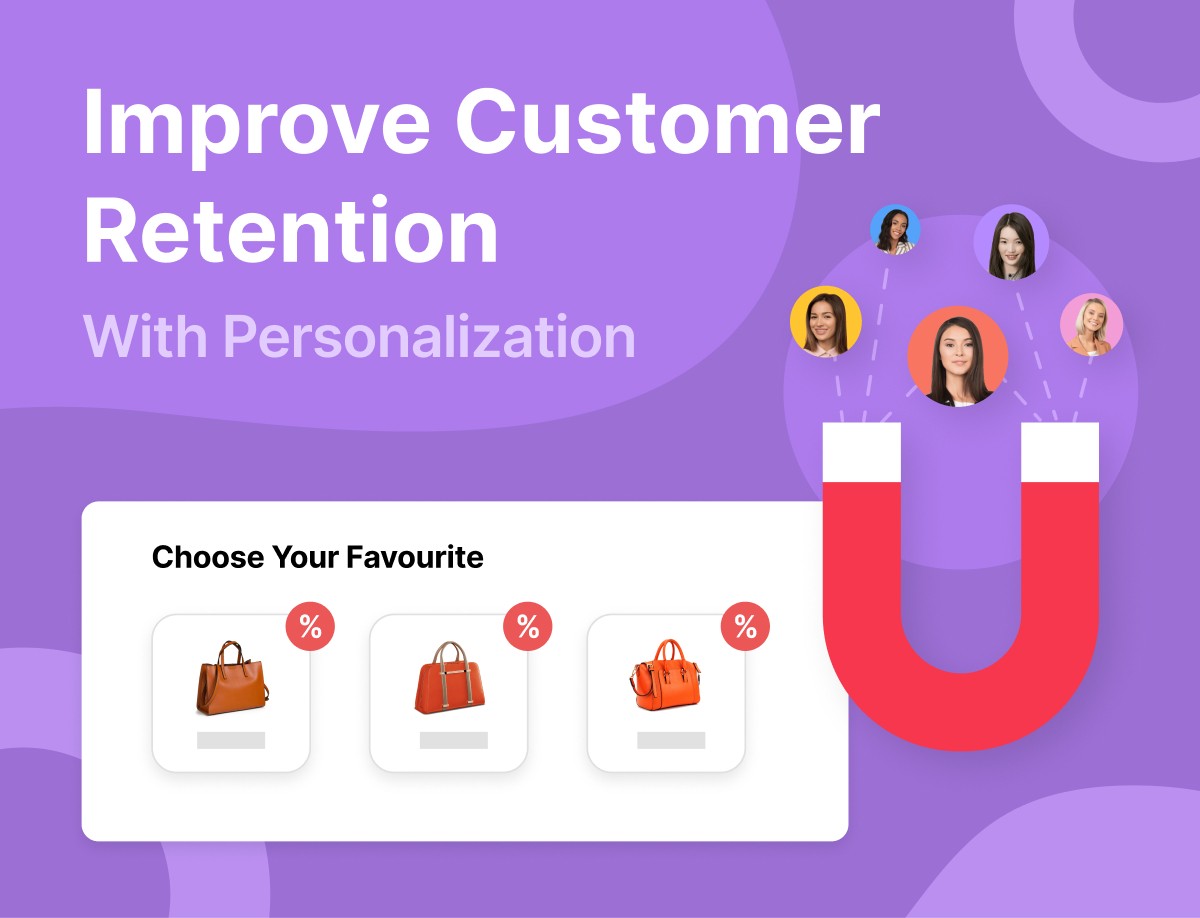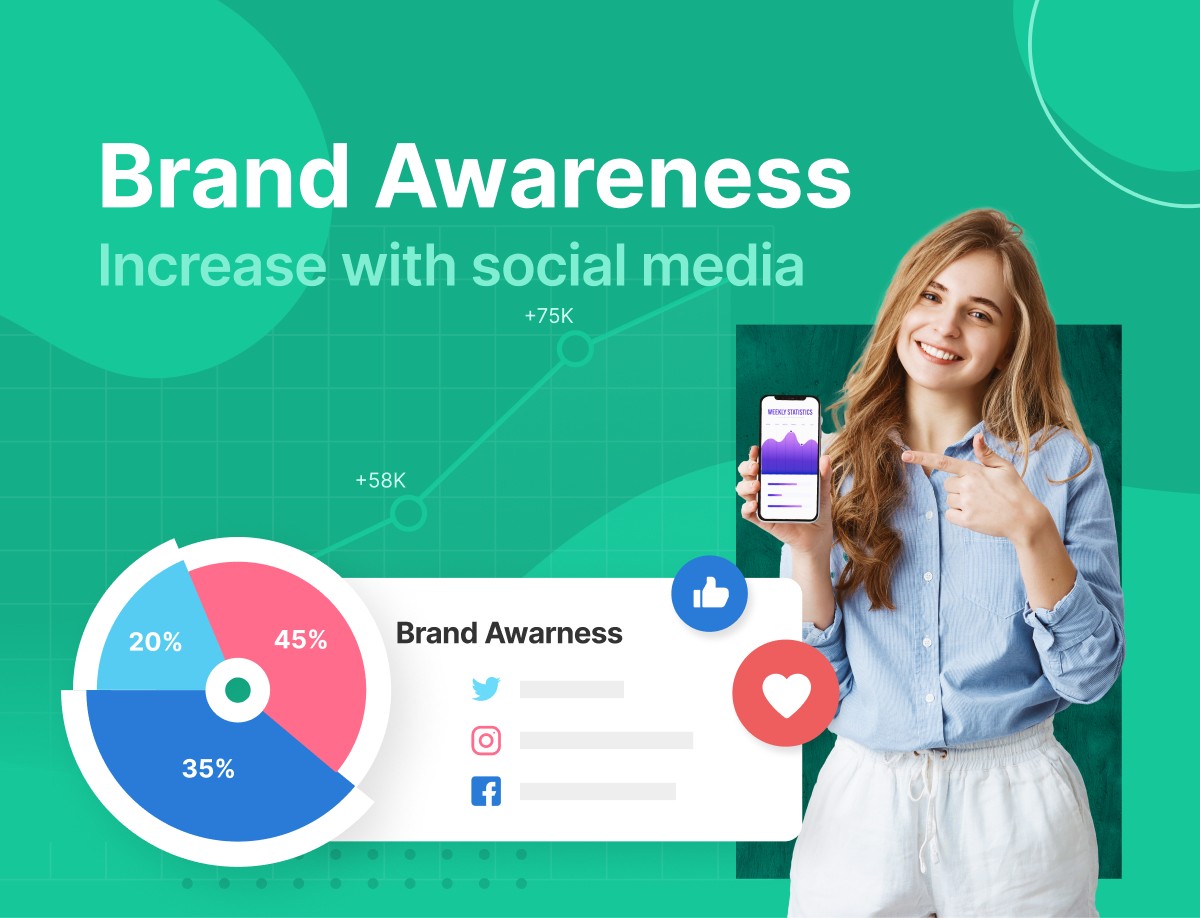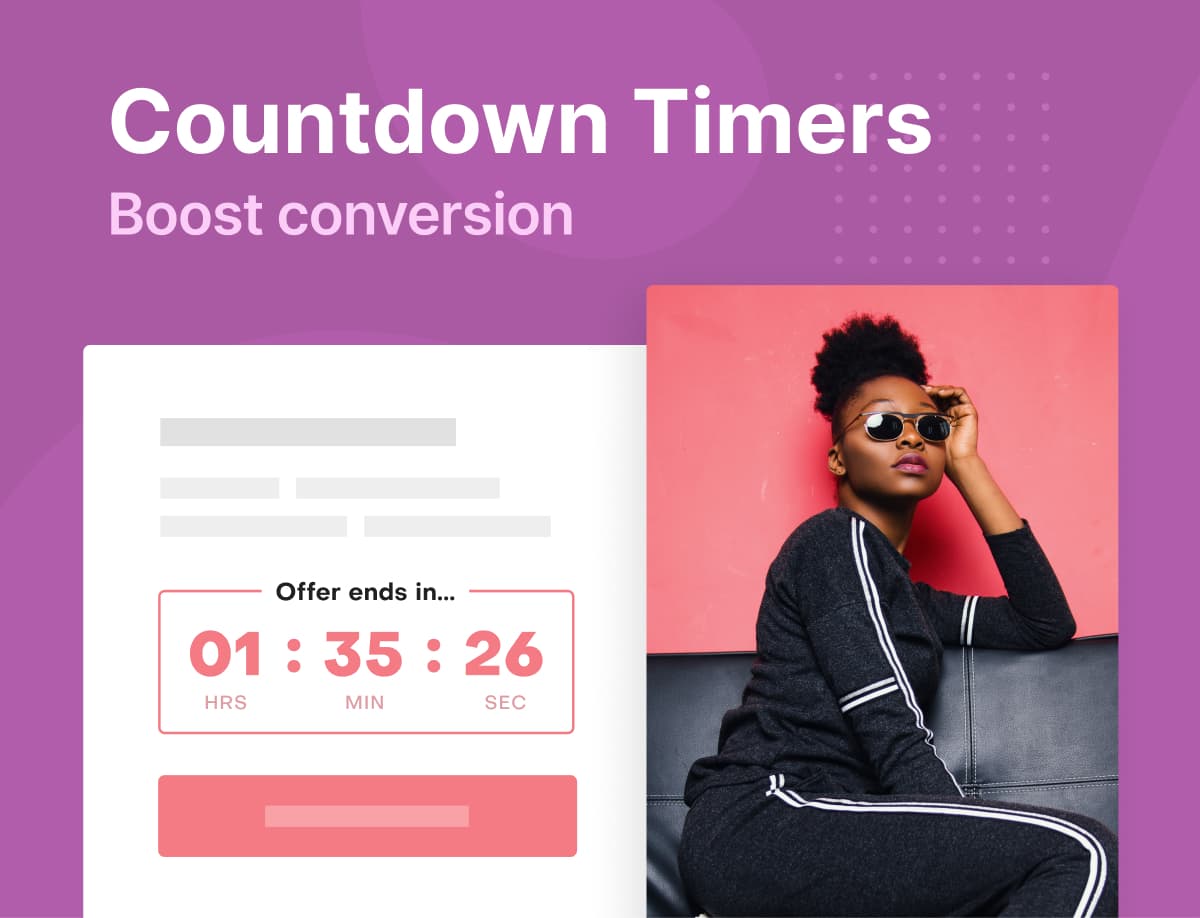Do you want your customers to stick around after their first visit? Then, website personalization is a strategy that you need to look into if you haven’t.
75% of consumers say that they’ll buy from a retailer that can either recognize them by name, knows what they bought in the past, or can recommend options based on their purchase history.
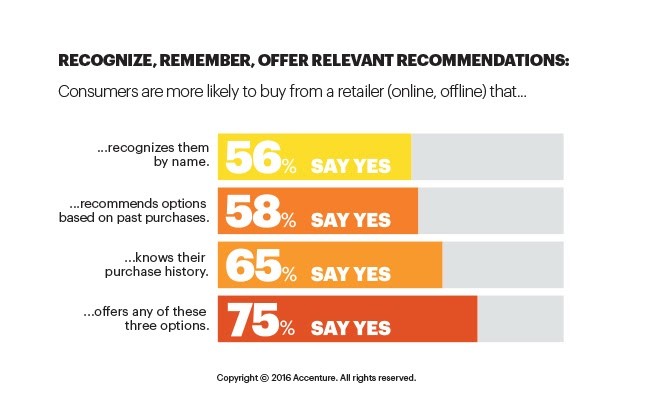
Want to get yours up and running as soon as possible? We’ll show you 11 strategies to help you implement hyper personalization on your website.
Here’s an outline to give you a glimpse of what you’ll learn here:
- What is website personalization?
- Types of personalization.
- Importance of website personalization.
- 11 strategies for implementing website personalization.
What is Website Personalization?
Website personalization is the process of tailoring what a visitor sees when they land on your website to certain criteria such as their purchase history, location, or other personal information.
This means that instead of a single experience targeted at a broad audience, website personalization allows you to create unique experiences that match the desires and needs of your visitors.
For example, if John Doe visits a website on a cold morning, and he’s shown a homepage that reads “Good morning John” and offers him a steaming cup of coffee, he has just had a personalized web experience.
This is a common example. Currently, web personalization goes much further than addressing a visitor by their name and detecting where they are located.
Amazon, for instance, has a recommendation engine on their website that shows relevant product recommendations. This is a form of eCommerce personalization in action.
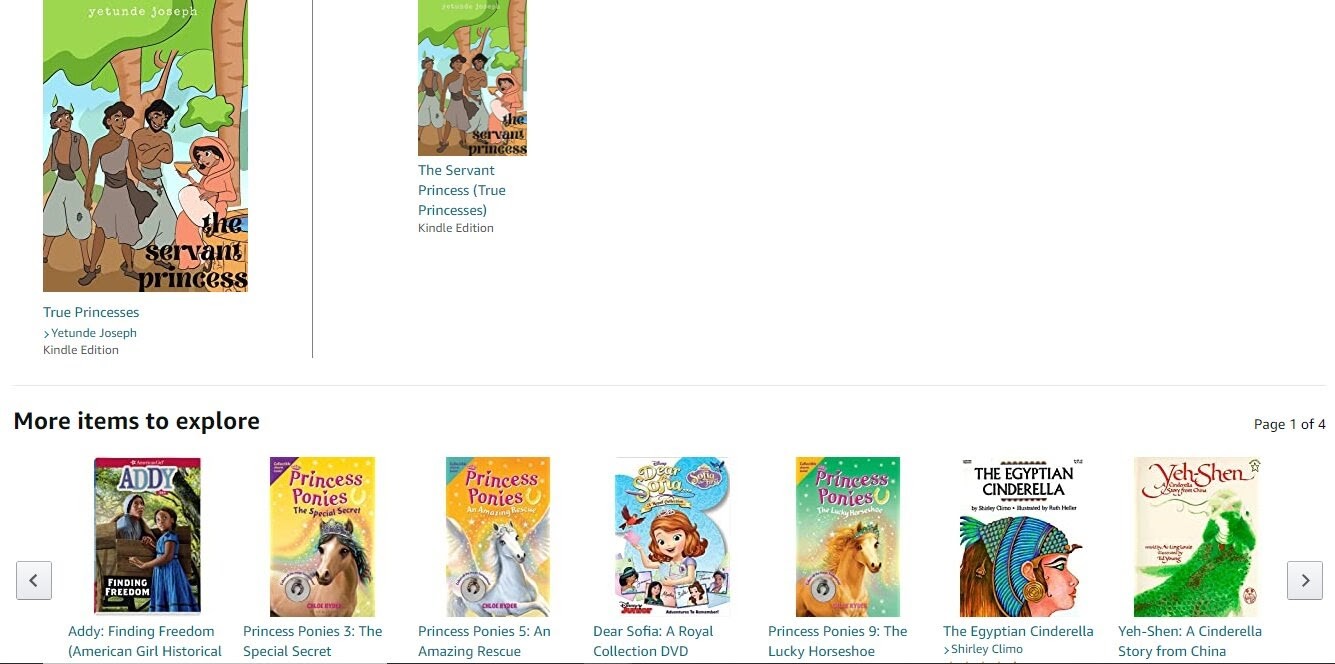
Types of Personalization
There are three main types of personalization. They are:
1. Rule-Based Personalization
This type of personalization allows you to manually create preset rules that determine what experience each segment of your audience gets.
For example, if you find that a particular segment of your audience mostly subscribes to SEO writing tips, you can set rules that ensure that they get recommendations of SEO-related content. This rule will not apply to other segments of your audience.
You can also use it to personalize your visitors’ experience according to their referral source.
Rule-based personalization can be applied to both broad audience segments (wide groups of web visitors) and narrow ones (small groups of web visitors).
Rule-based personalization only works best when you are looking to personalize the experience of your audience collectively. But on an individual basis, you’ll just have to look elsewhere. This is where machine-learning personalization comes in.
2. Machine-Learning Personalization
Machine-learning personalization is a more advanced form of personalization that caters to individuals, not segments.
It uses algorithms to give a one-on-one personalized web experience. It does this by actively collecting data and analyzing them in real-time. With this, it can predict what a web visitor needs per time.
Machine-learning personalization is becoming more popular among many brands because it’s more scalable. It can be used to personalize product or content recommendations, search results, ad campaigns, etc.
3. Rule-Based and Machine-Learning Personalization Combined
Both types of personalization are important in web personalization and can give you impressive results whether used separately or combined.
One cannot totally replace the other as they have roles to play in the same personalization processes. This is why when combined, they can provide an excellent personalization experience that gets your web visitors coming back.
Importance of Website Personalization
Despite the demand for personalized web experiences, many people still end up being dissatisfied with the level of personalization available on many websites.
This simply means that if you have an effective personalization process on your website, you’ll be way ahead of about 60% of companies that are still struggling to get the hang of it.
Still wondering why you should personalize web experience for your users? Here are some reasons:
1. To Know Your Customers Better
In the process of personalizing your website, you’ll have to collect information about your customers and pay closer attention to how they interact with your website. Armed with this knowledge, you can improve other areas of your business.
If you know your customers well enough, you can create campaigns that are directly targeted at them. This way, you’ll be saving yourself time and resources that you would otherwise spend on unproductive campaigns.
2. Generation of Relevant Leads
It’s not enough to generate leads for your business. If your leads are not interested in your product or service, you’ll have an unproductive list of leads on your hands. This will also result in wasted resources and fewer conversions.
Personalization helps you generate leads that are relevant to your business. This way, you can be sure you have your ideal audience and you can focus on satisfying them.
3. Increased Engagement
It takes only about 8 seconds before a person’s attention shifts from one thing to another. How do you keep your visitors on your website long enough to give you sales, read blog posts, or give you their email addresses?
Personalizing your website is the solution. It ensures that you are giving your visitors content, product recommendations, or showing them campaigns that are relevant to them.
This way, they’ll spend more time on your website and keep coming back.
11 Strategies for Implementing Website Personalization
Don’t know how to go about implementing personalization on your website? Here are 11 strategies to help you:
1. Define Your Goals
Before you get into personalizing your website, ask yourself what exactly you hope to achieve. Why do you want to personalize your website? Do you want to reduce bounce rate, increase conversions or increase repeat purchases?
To make things easier, you can set different goals for different areas of your business. For example, a typical goal is to increase your customer retention rate by 12% in 6 months.
Still, finding it difficult to articulate your thoughts at this point? Analyze your website by asking yourself the following questions:
- What are the current challenges on my website?
- How can I engage my returning visitors to interact better with my website?
- What specific areas of my website should I pay attention to?
- What metrics will I use to track my website personalization performance?
These questions will help you create a working plan for personalizing your website.
2. Gather Data
How do you know enough about your visitors’ unique needs and desires to provide them with a personalized online experience?
The simple answer is data collection- especially in real-time. The key demographics (basic information such as income range, gender, location, age, etc.) of your audience may give you a clue to what they want, but it won’t be enough to craft a detailed personalization strategy.
Data is the bedrock of any form of personalization. The more you know about your visitors, the better your website personalization can be.
Personalization is easy as long as you collect the right data. Gathering data is not as difficult as it sounds. If you look in the right places with the right tools, you’ll find that your online visitors are constantly leaving clues that can tell you exactly what they want.
A few examples of sources where you can mine useful data for personalizing your website are:
- Purchase history
- Emails opened
- Shopping cart data
- Links they click on
- Searches
These can help you target your visitors with relevant content, product recommendations, and even loyalty rewards.
You may be wondering if there are boundaries when it comes to collecting data. You don’t want your customers feeling stalked, right?
The truth is, many people tend to ignore privacy concerns when they know what their information will be used for. Also, make sure to add a privacy statement on your website that assures your visitors of their safety. This way, you’ll be building brand trust.
Apart from website personalization, data can also help you develop an overall personalized marketing strategy to keep your customers interested in your brand.
3. Create Quizzes and Surveys
Quizzes and surveys are designed to get data from visitors and are potentially more effective than other methods.
Here’s why: your visitors give you their information directly in their own words. So, you have first-hand information on their preferences, desires, and needs.
The challenge with this strategy is getting people to take the quizzes or fill surveys. However, the chances of getting people to fill surveys or take quizzes may be higher if they are already familiar with your brand.
If your customers understand that it’s towards making their experience on your website easier, they’ll appreciate that you want to make things easier for them and give you what you need without hesitations.
See what a quiz by Doe Lashes for its customers looked like:

By structuring your quiz in a manner that appeals to your audience as Doe Lashes did, you’ll increase your chances of getting more responses from your audience.
Before using data from a quiz or survey to implement a personalization process, you need to be sure that it’s reliable.
How do you do this? You need to check that the number of responses you get is enough to make a decision.
Let’s assume you have an average of 3000 customers and you get 100 survey responses. Because 100 is a small fraction of 3000, creating a strategy based on this data would be a bad move. You may end up creating a personalization process that leaves most of your customers dissatisfied.
Even worse, they may leave your website for good. This is definitely not good for customer retention.
If you can avoid these pitfalls, you’ll end up with valuable data for your personalization process.
4. Use Pop-ups to Target Specific Customer Segments
Popups are annoying, yet, many brands still use them. Why? They work, especially when they are used smartly.
On your web personalization journey, popups will be very handy to get clues about what your customers want.
Popups help you collect customer information directly. Popups are dynamic and can be used across many scenarios and stages of the customer journey.
For example, you can show your visitors a popup with two different offers. The one they choose can give you a clue as to what they are looking for on your website.
You can also use pop-ups to get contact information like email addresses from a first time visitor. With their email address, you get another avenue to target them better with more personalized offers.

One way to make sure your popups are always relevant to your visitors is to show them on related pages. For example, you can display a popup for a new fertilizer product on a blog page that teaches how to apply fertilizers. This way, you’ll be saving your visitors from seeing unnecessary ads that might send them away from your website.
Here’s an example of a juicing ebook offer that pops up only in the juicing category of Health Ambition’s blog:

Wondering how to create popups, sign up on Adoric for free to get help with it.
5. Use The Right Technology
Using the right tools can make your personalization process a breeze. First, you need an effective marketing technology tool such as Segment to collect data, interpret it, and segment your audience accordingly. They can also help you automate personalized campaigns.
Adoric, for example, provides you with a recommendation engine that helps you show relevant product recommendations to your visitors on any page of your website. It also helps you track your analytics easily.
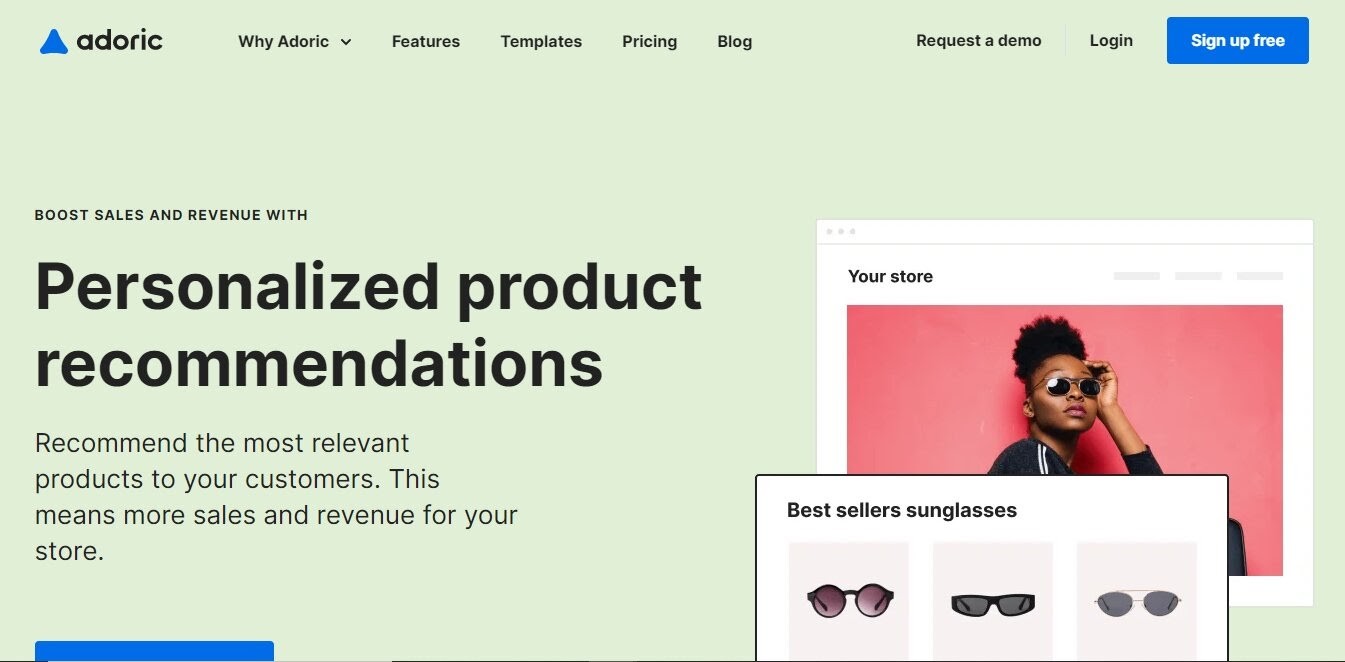
A combination of the right tools helps you provide your customers with a consistent personalization experience and saves you a lot of time and resources.
Some technologies may be pricey, especially if you have a large business. So, when looking for tools to use, consider your budget but remember that it’s worth the spend.
6. Create Clickable Links for Your Different Value Proposition
If you have customers with different needs, or you offer a variety of products or services, it would be smart to create clickable links for each of your value propositions on the same web page or campaign.
Your unique value proposition is what makes you different from the competition. It’s how you convince your audience to do business with you.
Creating a clickable link for each of your value propositions will lead the customer to the specific solution they want from your website. This way, your visitors don’t have to surf your website for too long before finding what they need.
With this strategy, you’d be able to personalize your website for different segments of your audience.
7. Segment Your Audience
Segmentation is the act of classifying your audience according to common interests. By segmenting your audience, you can easily determine who they are, where they are located, what they want, and how to reach them through personalization.
Marketing technology tools like Segment can help you with this. They’ll also automate the segmentation process and keep it updated in real-time.
What this means is that these tools can track your customers’ behavior on your website and add them to groups according to the criteria you have set.
You can then target these different groups with tailored web personalization processes.
8. Use Geotargeting
Geotargeting allows you to deliver content, product recommendations, etc. to your web visitors based on their geographic location.
Location information is one of the easiest data to collect. You can collect location data by asking your visitors directly, using tracking cookies, company records, social media, etc. There are equally many ways to use it to give your visitors a personalized experience.
This data can be very valuable for providing personalized product recommendations, welcome messages, search results, and even shipping costs. It can also help you customize your website’s language like CocaCola does in this example:
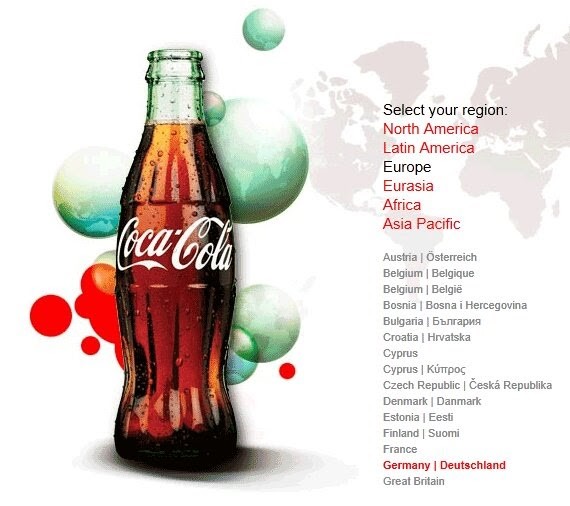
9. Target Users Based on Referral Source
If you can’t afford the tools and software for website personalization, you can simply start by targeting your visitors based on their referral source.
This simply means that a visitor who visited your website via a link you posted on social media will get a different experience from another visitor who searched for you on Google. How to do this? Simply segment your audience by referral source and apply rules to each group as we earlier highlighted under rule-based personalization.
From the referral source, you can also determine where the visitor is in the customer journey.
For example, if a visitor clicks on your link on social media, they are probably interested in your product. So, it would make sense to show them a product offer.
If the person gets to your website through a google search, they are most likely looking to get informed about your product or service. So, they won’t be looking to make a purchase at this point.
10. Use The Omnichannel Approach
The omnichannel approach involves using information from all the channels with which you interact with your customers to create a personalized website experience for them. These channels could be your mobile app, marketing emails, and your website (of course).
The truth is, your visitor sees your brand as the same- whether they are interacting with your emails, browsing through your website, or purchasing an item via your mobile app.
The omnichannel approach helps you create a personalization experience that harmonizes the visitor’s behavior across all your channels using the right technology.
For instance, if a web visitor gets a product recommendation on your website based on their recent searches, the items they searched for while using the mobile app would also determine what suggestions they get.
This will in turn increase the relevance of your brand across all platforms and make your customers stay with your business longer.
11. Keep Updating Your Personalization Strategy
Like most digital strategies, you can’t afford to rest on your oars. With personalization, there’s always room for further optimization. Because it’s a trend that’s constantly evolving, there’ll always be new technologies to adopt and new ways to implement old strategies.
You’ll also need to check your performance every few weeks to ensure that your website personalization strategy is effective and serves your customers well.
Here are some metrics you can use to track your performance:
- Average time visitors spend on your website.
- Top-performing landing pages on your website.
- Bounce rate- the rate at which people leave your website after visiting only one page.
- Rate of conversion- the rate at which visitors complete actions such as making purchases, subscribing to emails, etc. on your website.
Conclusion
Getting new leads for your business is good, but retaining them is equally important. It’s fine if you can’t retain them all but you still have to try your best.
Website personalization will help you increase your customer retention rate. So, why not jump on the bandwagon already? With the tips we’ve shared with you, we hope it no longer looks like a daunting task.
Adoric makes it even easier by providing you with solutions that will make implementing personalization a breeze. You only need to sign up for free today to get them.
Don’t forget to share this post if it helped you.

